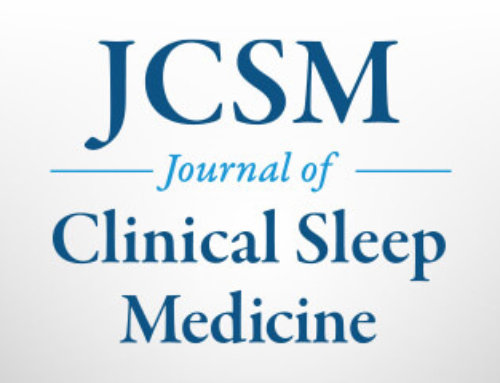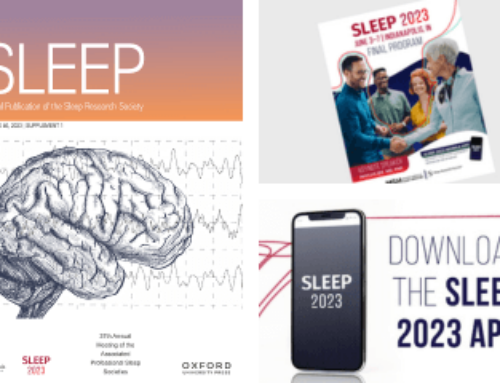Westchester, Ill. –A study in the October 15 issue of the Journal of Clinical Sleep Medicine shows that unrelated to obesity, people with severe SDBs consume a more unhealthy diet, which may be a factor contributing to greater cardiovascular morbidity and mortality. These findings were most evident among women.
Stuart Quan, MD, division of sleep medicine at Harvard Medical School, said, “We found that persons who had severe
obstructive sleep apnea ate a diet that was unhealthy with increased intake of cholesterol, fat and saturated fatty acids.”
Findings showed that, on average, all participants with extremely severe SDB, or those with respiratory disturbance index (RDI) above 50 disruptions per hour, consumed 88.16 more milligrams of cholesterol per day compared to people who have less severe OSA. On average, women participants with severe SDB consumed 21.96 more grams of protein, 27.75 more grams of total fat and 9.24 more grams of saturated fatty acids. These results remained significant after controlling for BMI, age and daytime sleepiness.
Results indicated that among the 320 participants, increasing RDI severity was associated with greater consumption of cholesterol, protein and trans-fatty acids. There also was a trend towards greater ingestion of total saturated fatty acids and total fat, but not carbohydrates, sucrose or dietary fiber. With the exception of cholesterol, these associations occurred primarily in women. The mechanism producing the higher dietary consumption of unhealthy nutrients in persons with extremely severe SDB appears to exaggerate behaviors already observed among obese women.
Compared with the 2005 U.S. Dietary Guidelines, participants "ate less than the recommended proportion of calories from carbohydrate and more than recommended from total and saturated fat."
It is unlikely that sleep deprivation or obesity explain the results of the study. It has been suggested that fatigue and sleepiness, as well as sleep deprivation influence dietary intake via alterations in neuroendocrine control of feeding behavior; however, controlling for Epworth Sleepiness Scale score did little to affect our results and in bivariate analysis, total sleep time was not associated with alterations in dietary intake.
According to Quan, the physical activities findings in the study were unexpected. “All of us suspect that patients with sleep apnea engage in less recreational activity. This was confirmed in the study,” said Quan. “However, the findings were explained entirely by obesity. We thought that because sleep apnea patients are sleepy they would engage in less physical activity even after accounting for the effect of obesity.”
It is well known that obese people are more likely to consume diets high in fat and cholesterol. The persistence of these results even after controlling for BMI suggests that a high RDI has an independent effect on dietary intake. Researchers of this study suggest that independent of sleep duration, OSA may affect levels of appetite-regulating hormones. Also, sleep disruptions related to OSA may in some way increase the craving for fatty foods.
Obstructive sleep apnea, (OSA), which is a form of SDB is characterized by repetitive episodes of complete or partial airway obstruction during sleep is currently estimated to affect 18 million Americans. OSA is associated with alterations in leptin and ghrelin, which are important in appetite regulation. It has been demonstrated that sleep deprivation, a common occurrence among people with OSA, is associated with increased body max index (BMI) and increased cravings for carbohydrates. The change in hormones results in leaves that may increase appetite and thus impact dietary intake.
To investigate the relationships between dietary intake, physical activity, OSA, sleep and obesity, the study used data from a subset of the Apnea Positive Pressure Long-Term Efficacy Study (APPLES), a randomized, double-blinded, two-arm, sham-controlled, multicenter, six-month, intent-to-treat study of continuous positive airway (CPAP) efficacy on neurocognitive function in OSA.
The study included 320 participants – 263 from the University of Tucson in Arizona and 57 from the St. Mary Medical Center in Walla Walla, Washington. More than half of the participants were obese. In addition to receiving polysomnography (PSG) studies and neurocognitive assessment, participants were asked to complete detailed dietary and physical activity questionnaires prior to the initial diagnostic PSG and at the end of the four-month clinical APPLES examinations.
Poor sleep quality, a consequence of OSA, is associated with fatigue and sleepiness, which may curtail physical activity; low sleep quality may also result in a compensatory increase in caloric intake in an effort to boost energy levels, both of which promote weight gain. This study provides important new information on the dietary habits of people with OSA, which may be another mechanism through which SDB leads to serious health conditions such as cardiovascular disease, hypertension and stroke. Based on the study’s findings, unhealthy dietary and activity patterns warrant further study of their role in cardiovascular and metabolic syndrome development in patients with OSA.
The Journal of Clinical Sleep Medicine (JCSM) contains published papers related to the clinical practice of sleep medicine, including original manuscripts such as clinical trials, clinical reviews, clinical commentary and debate, medical economic/practice perspectives, case series and novel/interesting case reports. In addition, the JCSM publishes proceedings from conferences, workshops and symposia sponsored by the American Academy of Sleep Medicine or other organizations related to improving the practice of sleep medicine
For a copy of the study, “Associations of Dietary Intake and Physical Activity with Sleep Disordered Breathing in the Apnea Positive Pressure Long-Term Efficacy Study (APPLES)” or to arrange an interview with an AASM spokesperson, please contact Kelly Wagner, AASM public relations coordinator, at (708) 492-0930, ext. 9331, or
kwagner@aasm.org.
AASM is a professional membership organization dedicated to the advancement of sleep medicine and sleep-related research. As the national accrediting body for sleep disorders centers and laboratories for sleep related breathing disorders, the AASM promotes the highest standards of patient care. The organization serves its members and advances the field of sleep health care by setting the clinical standards for the field of sleep medicine, advocating for recognition, diagnosis and treatment of sleep disorders, educating professionals dedicated to providing optimal sleep health care and fostering the development and application of scientific knowledge.




